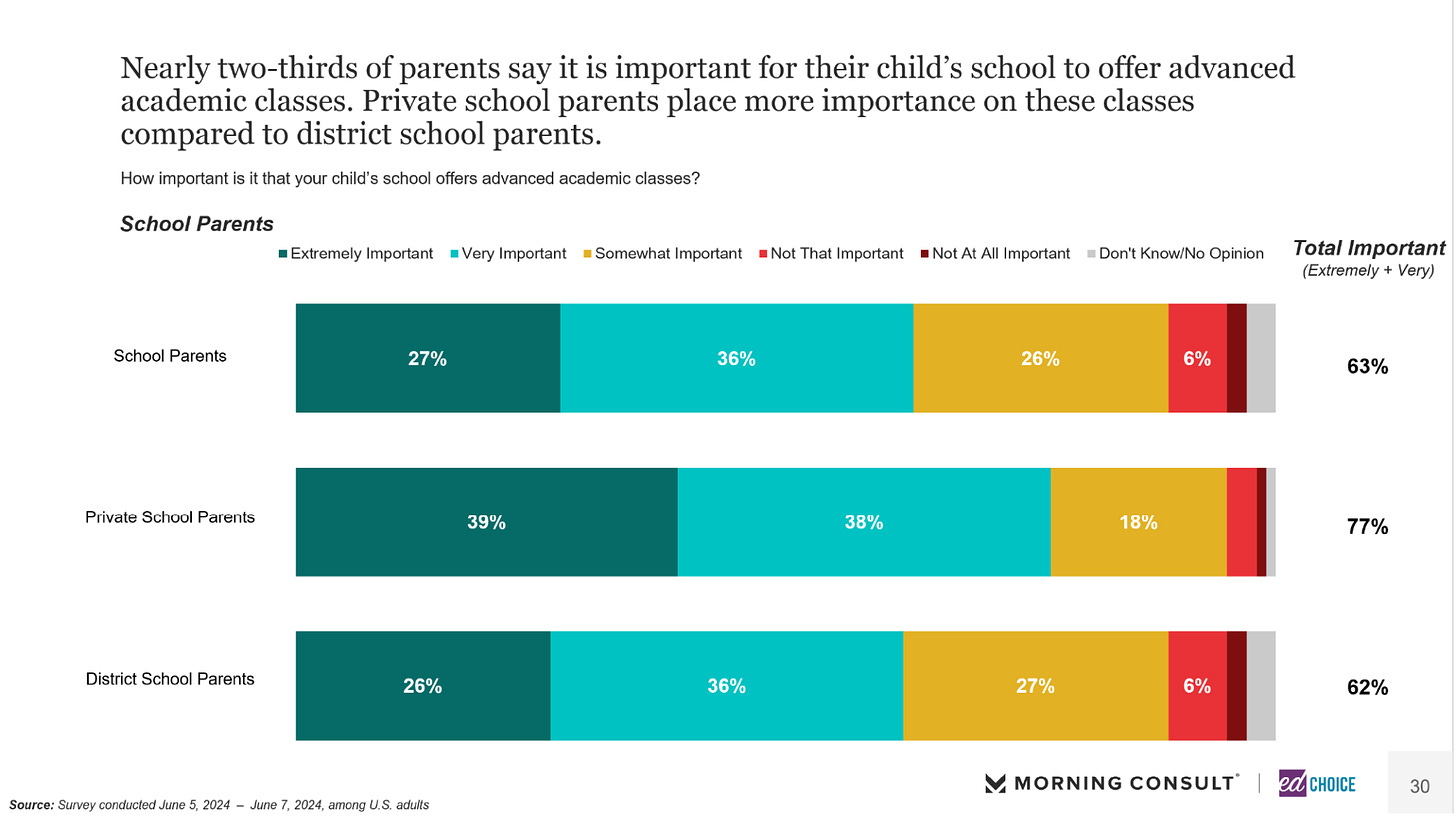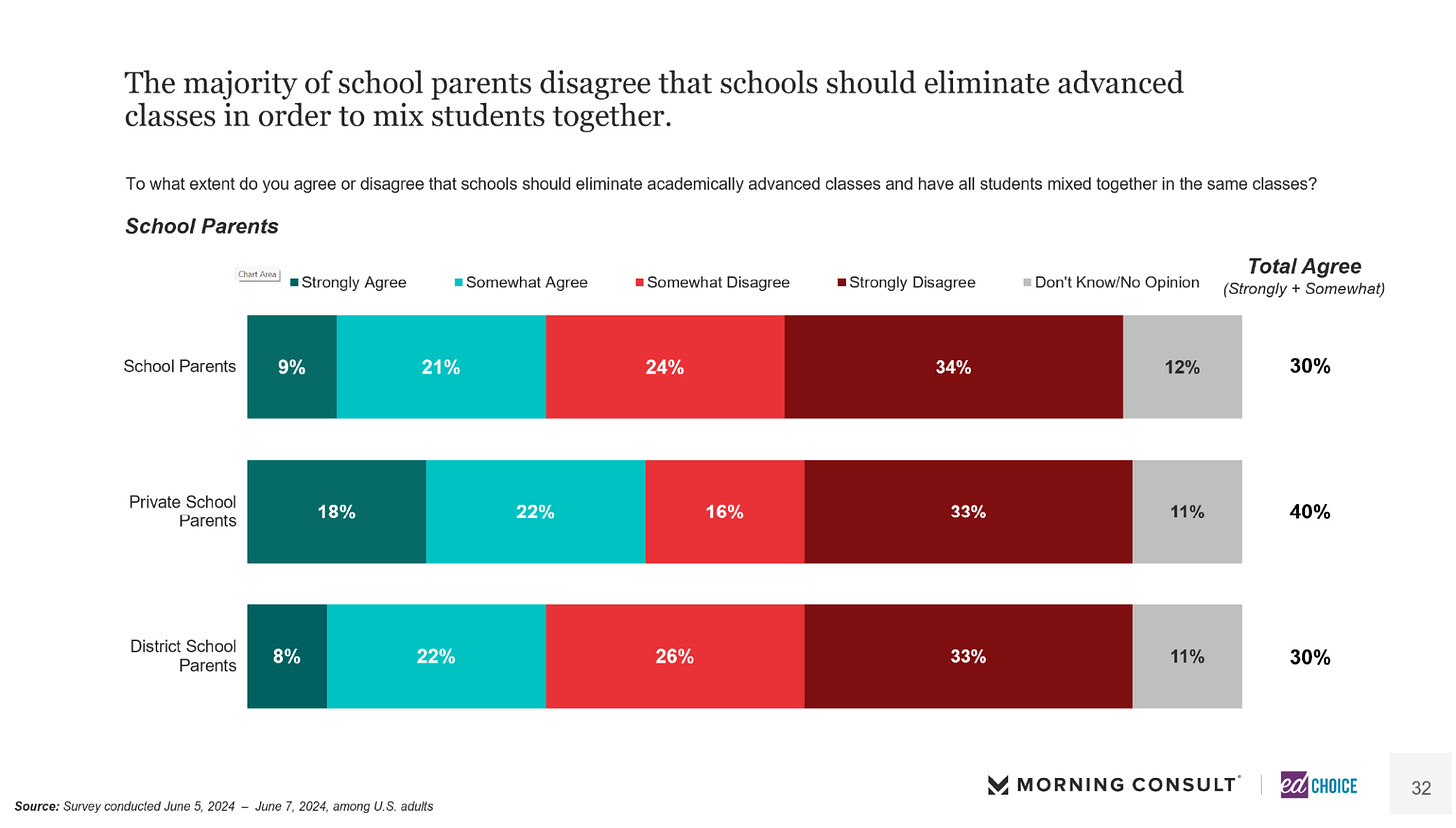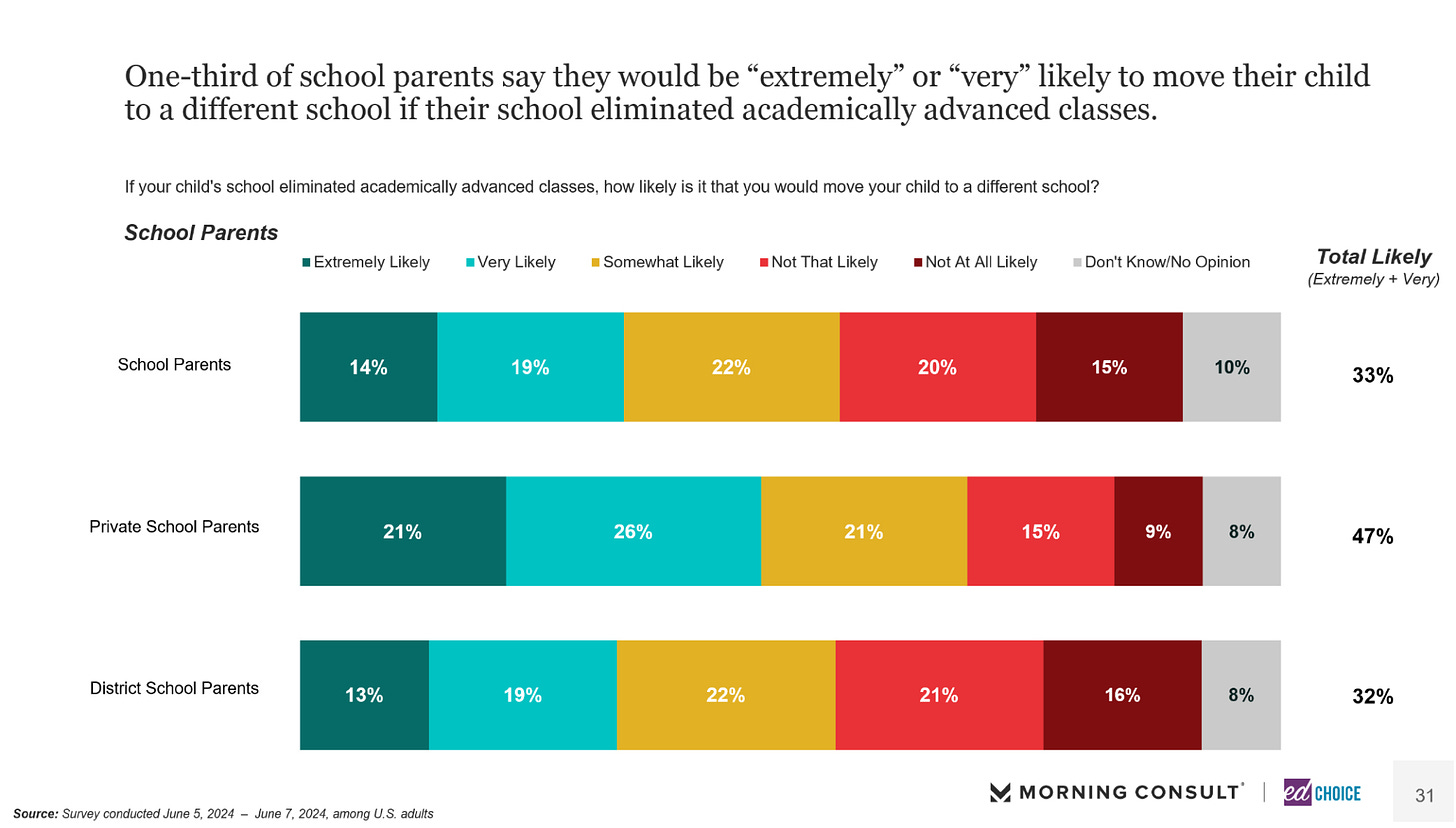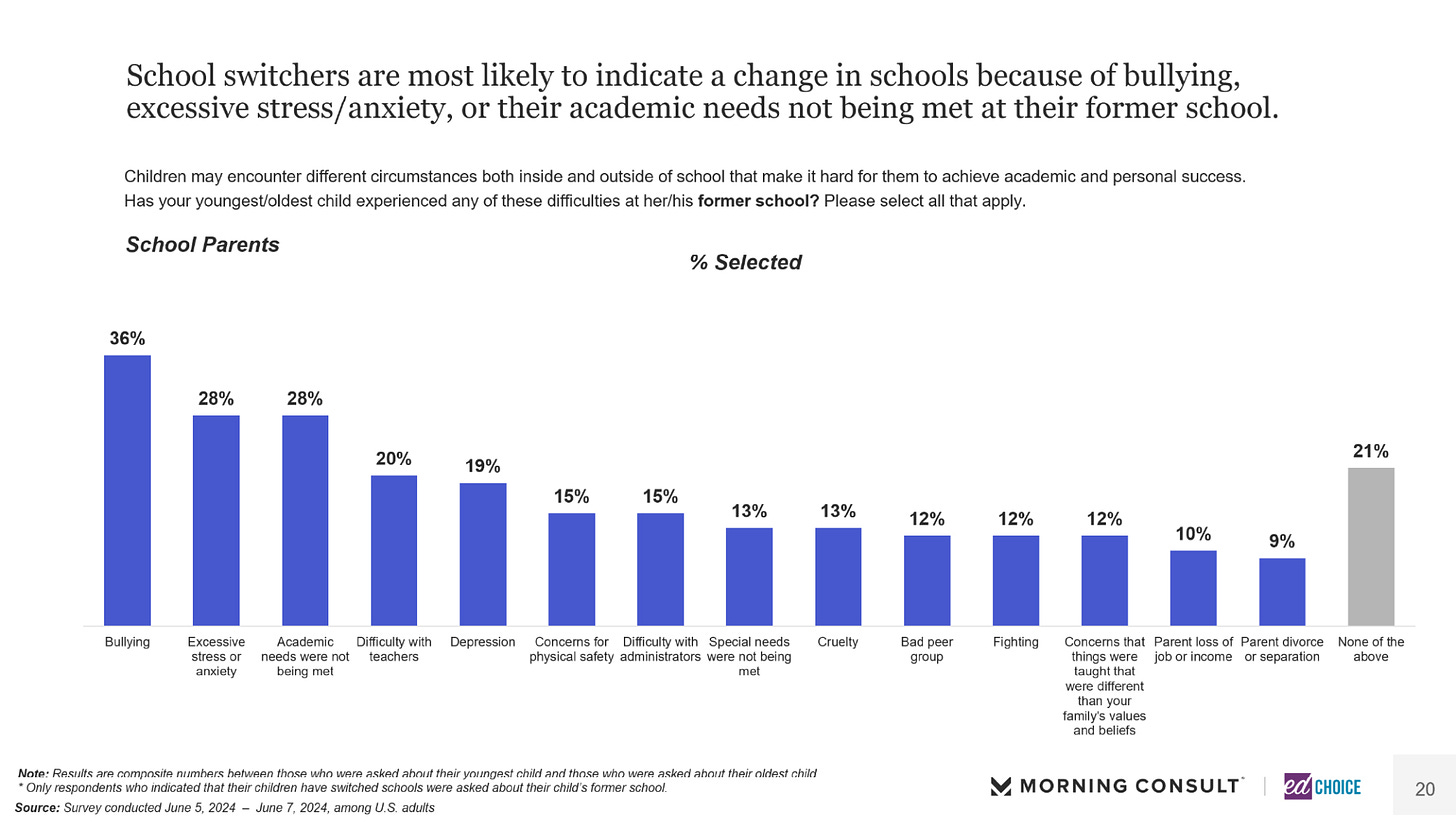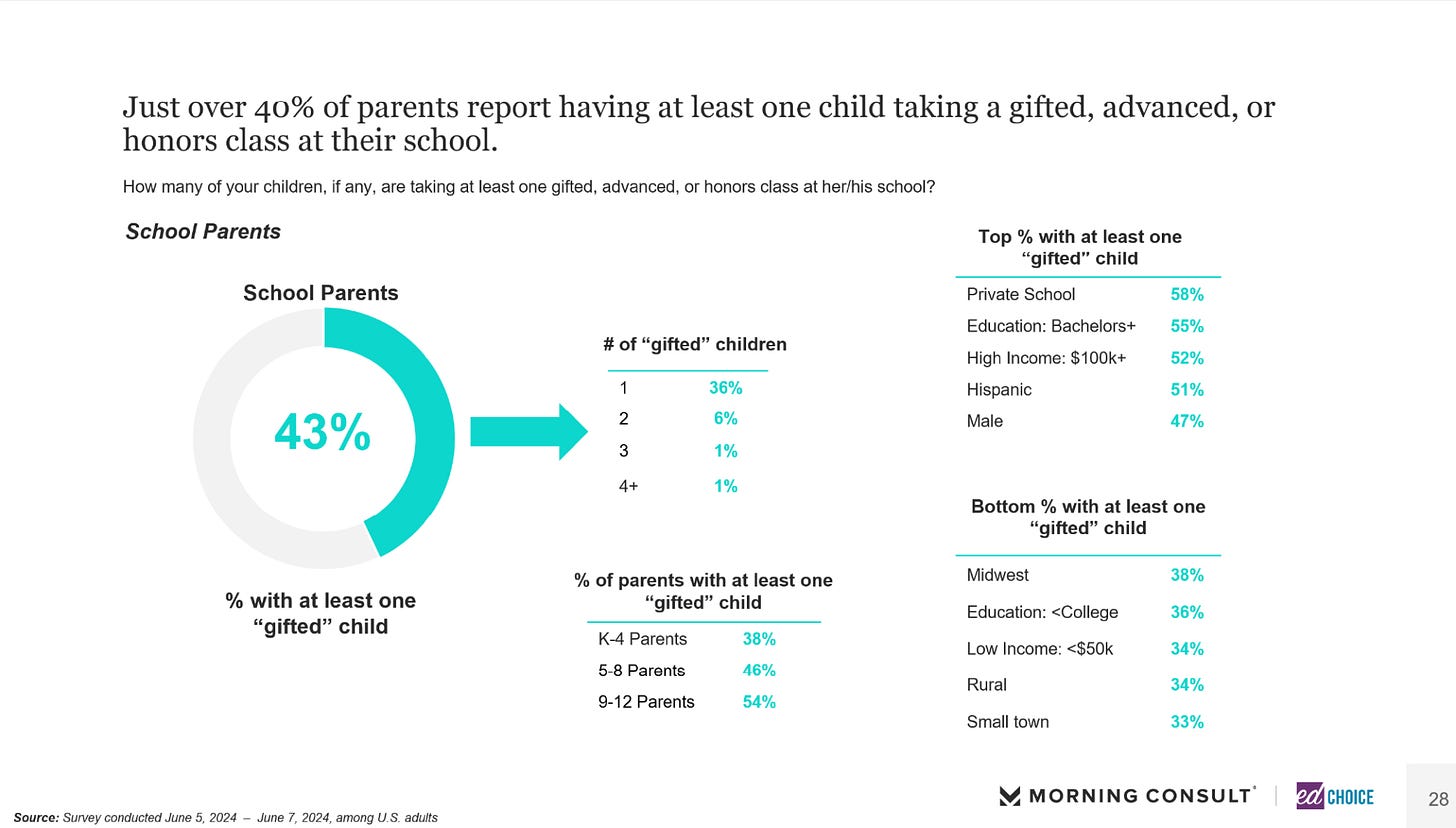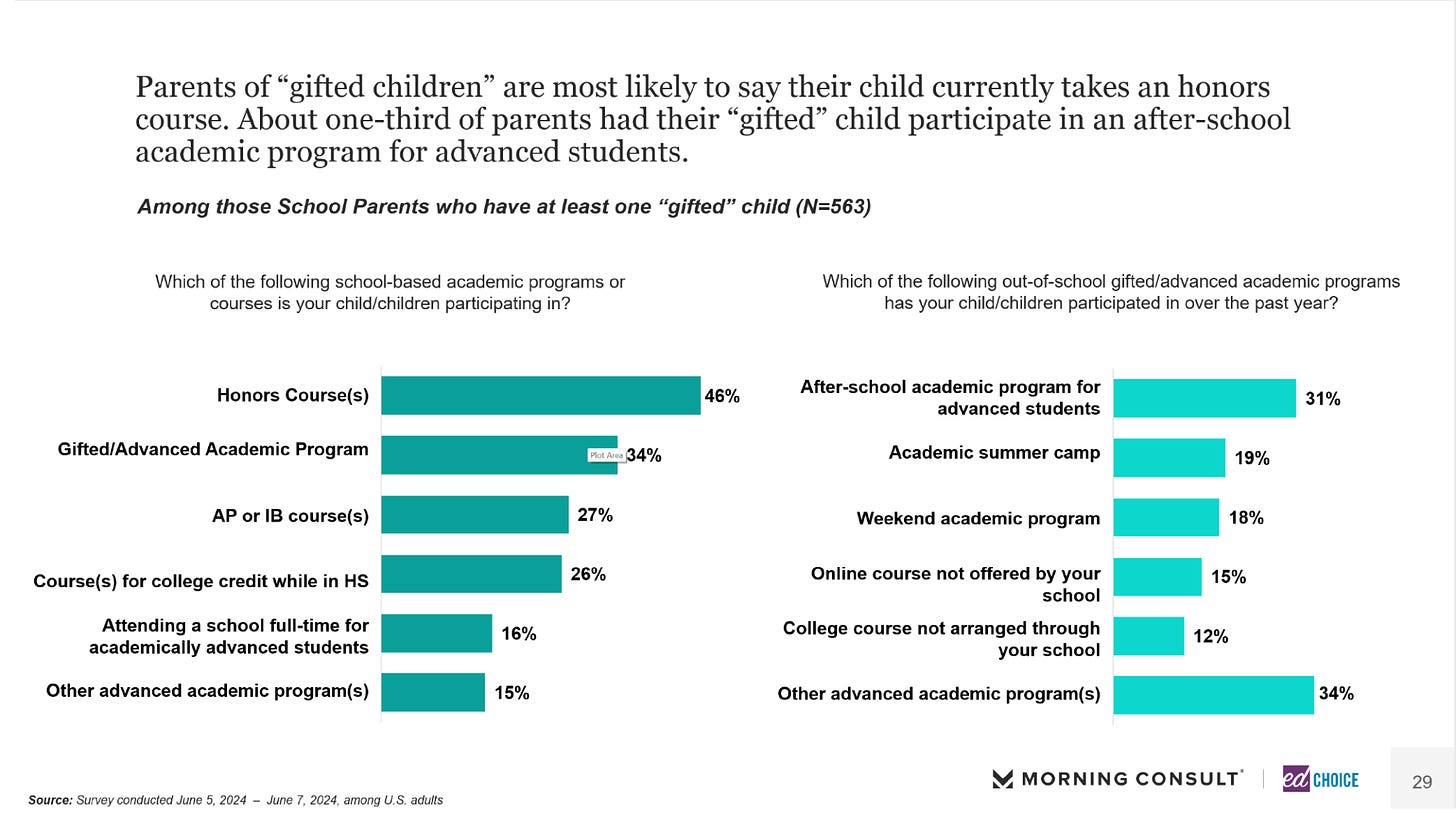Josh Barro wrote earlier this week that Vice President Kamala Harris has the remarkable fortune to run in a general election without having staked out any unpopular positions in a Democratic primary—at least not since she ran for president five long years ago. That means she enjoys the ability to claim some positions in the political center that can address her weaknesses and boost her chances of victory. “Harris’s biggest political liability,” Barro argued, “is that she may be seen as too politically extreme, and she can reposition herself toward the center without penalty, if she is willing to do that.”
That doesn’t mean she has a completely free hand. As Matt Yglesias pointed out, groups on the political left have been less willing to give a pass to their Democratic presidential candidates than those on the Trumpy right have:
[Trump’s] “be allowed to do that” score is off the charts. If it’s convenient for him to start saying nicer things about electric cars in exchange for Elon Musk’s money, he does that. If it’s convenient for him to pretend the Republican Party isn’t deeply committed to banning abortion, he does that.
Every progressive I know recognizes that these Trumpian stabs at moderation are good for Trump, and that it’s good for the left to try to expose them as lies. The progressives who recognize that need to see the symmetry here.
One issue that offers opportunities for moderation is education. Iglesias suggests that Harris might say something like “my parents moved to this country because it’s the greatest place on Earth, and I think my party and our school system need to get back to teaching kids patriotism.” That would be a good start, but there are plenty of possibilities. She might use this week’s speech to the American Federation of Teachers (AFT) to show she’s willing to buck progressive orthodoxy.
One obvious way is to talk about the current challenges facing teachers when it comes to classroom discipline. In the wake of the pandemic, but also some reforms embraced in the Black Lives Matter era, many American classrooms have gotten out of control.
Harris can lean into her prosecutor instincts and call for greater order and discipline in classrooms, and especially greater respect for teachers. She might say that it’s crazy that some states and school districts have adopted formal positions that children and teenagers can cuss out their teachers with little to no repercussions.
Relatedly, she might embrace the call to get cellphones out of the classroom, and also express support for tough love when it comes to chronically absent students. Back in California, she even prosecuted some parents for their children’s truancy, a position she later retreated from. But it wouldn’t be hard for her to say that kids need to be in school and parents need to be held accountable for making that happen. She doesn’t have to embrace draconian discipline rules; she just needs to create some distance between herself and the most unreasonable social justice warriors, who have been arguing that any form of traditional discipline is furthering the “school-to-prison pipeline.”
Discipline is an issue where she can get on the side of her teachers union base, whose leaders are hearing from their members about chaos in the classroom and watching veteran teachers quit because of school violence and disrespect. But if she really wants to be seen as a different kind of Democrat than her current boss, she’s going to need to disagree with the unions on a couple of other issues. President Biden has never been willing to do so, given his self-image as the most pro-union president in history. Not to mention that Jill Biden was herself a member of the National Education Association, which she and the president pointed out at every opportunity.
So how can Harris demonstrate that she’s not beholden to the unions, especially since one of them—the AFT—already endorsed her?
One possibility is for her to return to a proposal from her 2020 campaign, which was to boost teacher salaries nationwide. This time around, however, there should be a catch, mainly that teachers need to be held accountable for improving student learning. She could, for example, say that states and school districts need to make the attainment of tenure something that teachers earn through merit and a demonstration of effectiveness rather than just surviving for a few years.
Finally, Kamala Harris could indicate support for public charter schools. It’s quite clear from public opinion polls that school choice in all its varieties is very popular with parents, especially Blacks and Hispanics. Republicans have been smart to lean into that issue in recent years, and this might be one reason that they are starting to peel off voters of color.
But Republicans have created their own political vulnerabilities by embracing private school choice for wealthy parents, which is an obvious giveaway to the rich. They also support publicly-funded vouchers for religious schools, which even supporters read as code for “Christian schools”—making lots of normie voters nervous.
This is why Democratic presidents from Clinton through Obama embraced public charter schools as a way to support school choice without the unpopular aspects of private school choice. So did a host of Democratic governors, mayors, members of Congress, and senators. Not to mention that public charter schools continue to prove their mettle in boosting student learning. A brand-new study even shows their effectiveness at dramatically raising college graduation rates.
Harris need not say much, just that she will support public schools of all varieties, including public charter schools, especially at a time when we need to make progress again on narrowing achievement gaps and helping kids recover from pandemic-era learning loss. That’s a pretty low bar—though one that President Biden failed to clear.
It may be true that Vice President Harris, in her heart, is your typical progressive Democrat from California. But she has an unusual opportunity to shed some of that political baggage. Indicating that she will be open to education reform is one of the best ways to do so.




